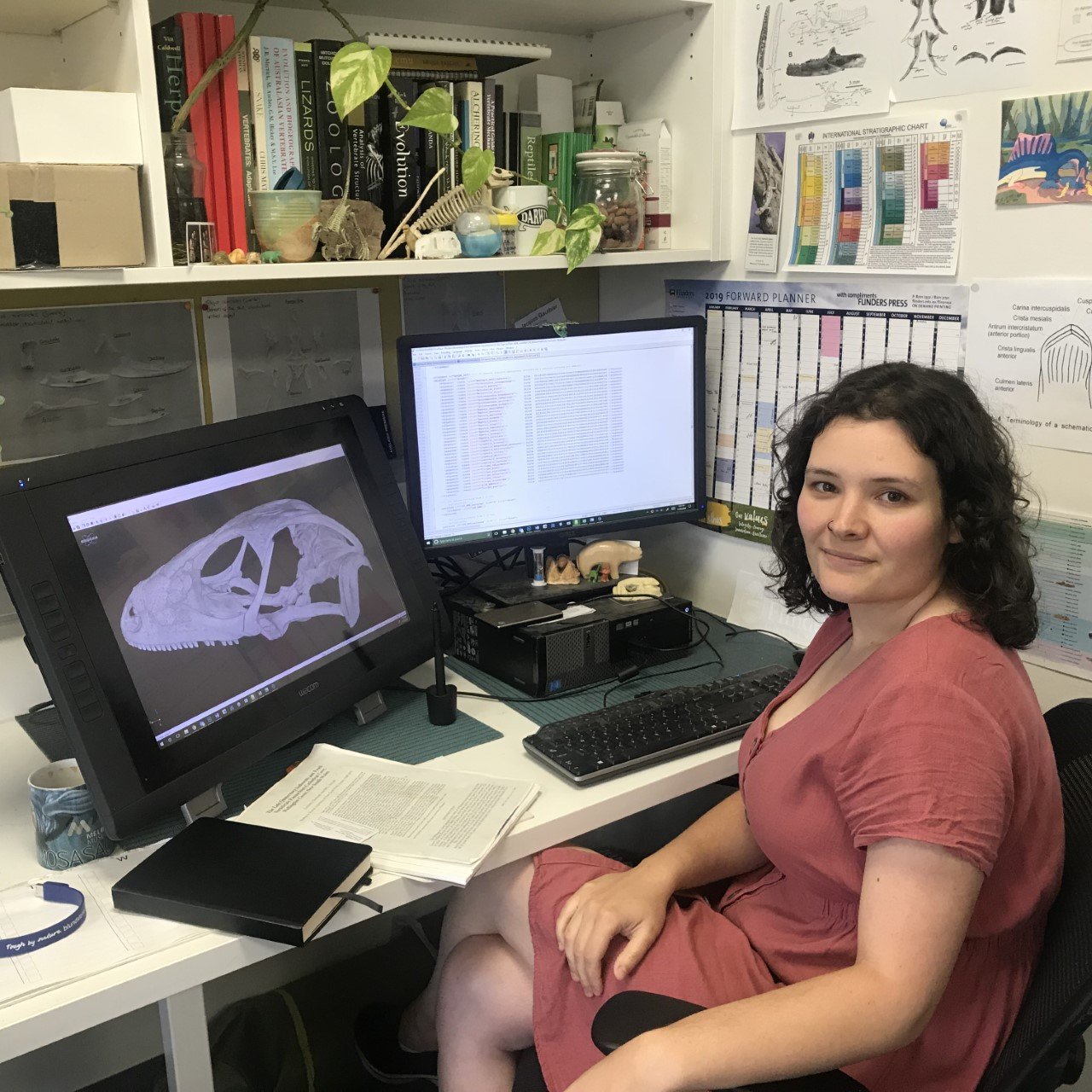New species of skink an ancient relative of the blue-tongue

In 2017, palaeo-herpetologst Kailah Thorn was walking along the salt-crusted edges of a rich fossil site at Lake Pinpa, a seven hour drive north of Adelaide, in search of fossilised lizard bones. In the punishing 45-degree heat, with emaciated dingoes looking on, she made an incredible discovery: a 25-million-year-old skink, unknown to science. But she didn’t know it at first.
“If you take a mammal skull for example, they’re really only two pieces, the skull and the jaw,” Kailah says. “A lizard’s skull however breaks up into more than 20 individual bones because they have a really moveable head, it’s very flexible.
“The mammal guys get to experience the excitement of finding something new when they’re in the field, I don’t get that excitement until I’m looking at teeny-tiny things under a microscope six months later, reconstructing 20 different small pieces of bone.”
Named Proegernia mikebulli, in honour of the late Professor Mike Bull, a decorated herpetologist responsible for our detailed understanding of lizards, this new species is an ancient member of the Australian skink subfamily Egerniinae, which also includes the blue-tongue lizard and the shingleback lizard.

The fossil was unearthed from deposits taken from the Namba Formation, which is also known to include remnants of ancient platypus, flamingos and freshwater dolphins. Expeditions to the area in South Australia in the 1970s yielded exciting finds about Australia’s megafauna, including the recently named Mukupirna, a giant, wombat-like marsupial. The site hadn’t been revisited until 2007, when the scientists found that these large skeletons had been covered up by lake sediment, with smaller fossils rising to the lake’s edges, ready to be pored over.
A similar skink fossil had been found from the nearby Etadunna Formation in the Lake Eyre Basin, but the specimen was subsequently lost. However, photographs of the specimen made it clear that this new fossil, while similar in some respects, is different, and thus a new species. Both, however, are similar in appearance to the skinks in the Lissolepis family that consists of today’s swamp and morning skinks.
“These two species of skink occur on opposite sides of Australia today,” Kailah says. There’s one in the south-west and one in the south-east, and those guys are of a very old lineage. Our fossil looks like it’s somewhere smack bang in the middle of the Lissolepis genus and some South-East Asian lizards. Timewise, the fossil fills a lot of gaps.”
Importantly, the discovery marks the first evidence of skinks in Australia. “They probably didn’t start in Gondwana, they may have come from the continent known as Laurasia, but we were never really able to figure out when all these things happened because we didn’t have the fossils to prove that, and now we know they’ve been here at least 25 million years. On a land that’s well-known for its reptile diversity, it’s very important to know.”
From here, Kailah has her eyes set on Pwerte Marnte Marnte, a 30-million-year-old fossil site located in the southern part of the Northern Territory. “There are some really interesting possibilities out there.”





